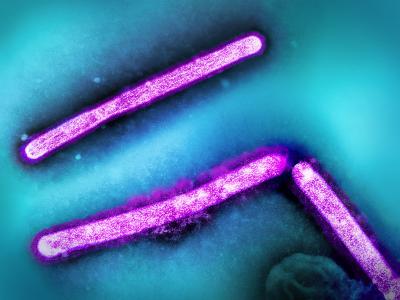China confirms 2 new H7N9 cases
Provincial officials in China have reported two new cases of H7N9 avian flu, according to reports yesterday and today.
The first case is in Ningbo city in Zhejiang province in east central China, according to a China News story yesterday translated and posted by FluTrackers, an infectious disease news message board. The patient—whose age and sex were not specified—had contact with live poultry and is hospitalized.
The other patient is a 58-year-old woman in Jieyang, Guangdong province, according to a news release today from Hong Kong's Centre for Health Protection (CHP). She is hospitalized in critical condition. The CHP did not mention any potential risk factors, such as poultry contact. Guangdong is in southeastern China.
The CHP also yesterday confirmed an H7N9 illness in a 46-year-old man in Jiangxi province that had been previously reported by provincial authorities.
The 2 new infections bring to 11 the number of H7N9 case in the fourth wave of the outbreak, which began in early 2013. Since then, China has confirmed 667 cases, said the CHP, and a case list maintained by FluTrackers puts the global total at 696 cases.
Jan 5 FluTrackers post
Jan 6 CHP news release
Jan 5 CHP news release
FluTrackers H7N9 case list
Microcephaly cases in Brazil possibly tied to Zika top 3,000
Brazil has identified 199 new suspected cases of microcephaly potentially related to the spread of Zika virus in the past week, raising the total of suspected cases to 3,174, according to a translated bulletin from Brazil's Ministry of Health (MOH) posted yesterday by infectious disease blog Avian Flu Diary.
Microcephaly, in which infants are born with smaller-than-normal heads and brains, has been reported in 684 municipalities in 21 Brazilian states, increasing in incidence with the spread of Zika virus in the country. A week ago 656 municipalities in 20 states were affected.
Of the total cases, 1,185 (37%) have been reported in the Pernambuco, which was the first state to identify cases. Other states reporting high numbers of suspected cases include Paraiba (504), Bahia (312), Rio Grande do Norte (169), Sergipe (146), Alagoas (139), Ceara (134), Mato Grosso (123), and Rio de Janeiro (118).
MOH officials are also investigating 38 deaths in infants with microcephaly that may be related to Zika virus infection. The country has declared a public health emergency and opened an emergency operations center as a response, as well as a national center to combat microcephaly that will focus on controlling Aedes mosquitoes, which transmit Zika virus.
Jan 6 AFD report
Dec 30 CIDRAP News scan on Zika virus and microcephaly in Brazil
Chicken behavior could indicate presence of Campylobacter
A study today by University of Oxford researchers found that broiler chicken behavior was an indicator of the gut bacterium Campylobacter, which causes food poisoning in humans if ingested via undercooked, infected chicken. Chickens that eventually tested positive for Campylobacter showed lower activity and less uniformity in flock movement as early as 7 to 10 days after birth compared with uninfected flocks.
The authors used a series of cameras surveilling 31 commercial chicken flocks from two major UK producers. The cameras tracked "optical flow," or the patterns made by flock movement measured by changing brightness within photo frames. Chicken fecal samples were also taken to test for Campylobacter, and the results correlated with the optical flow differences found between infected and uninfected flocks.
Because the difference in flock behavior was seen so early in the chickens' lives, the authors question how factors in the hatcheries or breeding groups might affect the likelihood of Campylobacter in chickens.
Although the study showed correlation between behavior and the presence of Campylobacter, the authors cautioned that they could not determine whether Campylobacter caused the behavior change or if the chickens' initial conditions were worse for another reason, making them more vulnerable. Campylobacter may not be in a commensal relationship with chickens but rather a parasitic one, according to the study.
In 2008, over 70% of broiler chickens in the European Union tested positive for Campylobacter after being slaughtered despite efforts to improve farm biosecurity. The authors hope that methods such as this observational technique can help farmers better predict and control Campylobacter in their flocks as well as assess potential high risk factors.
Jan 6 Proceedings of the Royal Society B study
Jan 5 press release
Study: A third of docs don't strongly urge HPV vaccination
A survey conducted by researchers from the University of Colorado and the US Centers for Disease Control and Prevention showed that 84% of pediatricians and 75% of family physicians (FPs) frequently or always discuss human papilloma virus (HPV) vaccinations at the child's 11- to 12-year visit, but a fair number don't strongly urge the measure, according to data published in Pediatrics this week.
Of the 364 pediatricians and 218 FPs who answered the 2013-2014 survey, more than a third did not strongly recommend vaccines for 11- and 12-year-olds. The physicians' most cited reasons for not recommending the vaccine were the patient's absence of sexual activity, a lack of time during the visit, the patient's youth, and the belief that the parents would defer.
More than half of the physicians reported that at least 25% of parents deferred HPV vaccination, and 88% of pediatricians and 67% of FPs said they were very likely to bring up the HPV vaccine during follow-up visits. For those who were less likely, the authors asserted that they were passing up opportunities to answer parents' questions about the vaccine.
According to the Advisory Committee on Immunization Practices, the HPV vaccine should be administered to 11- to 12-year-olds—before sexual activity and potential exposure to HPV, and because two other vaccines are given at that age.
The researchers recommend that, to increase vaccination rates, physicians should address how their own perceptions surrounding the vaccine and parents' attitudes affect their advocacy of it. One in four people in the United States are infected with at least one strain of HPV; the virus causes about 27,000 cancer cases per year in both males and females.
Jan 4 Pediatrics abstract
Researchers find infected dogs, opossums near vaccinia farm outbreak
After a vaccinia outbreak on two farms involving both cattle and people in Brazil in 2012, blood samples from three dogs and three opossums tested positive for the vaccinia virus, suggesting a possible reservoir, Brazilian researchers reported yesterday in Emerging Infectious Diseases.
The outbreak involved 31 cows and calves and two workers who milked cows and had lesions on their hands and arms. The researchers collected blood samples from 6 dogs, 6 pigs, 2 horses, 2 rams, 3 opossums, 1 coati, 1 wild mouse, and 1 water rat on and near the farms. Three of the dogs and 3 opossums tested positive via polymerase chain reaction for vaccinia virus, and none of the animals showed symptoms.
Genetic analysis showed that the virus in the dogs and opossums matched the outbreak strain.
The authors concluded, "These findings might support the absence of clinical signs and raise major questions about the potential for >1 mammalian species, either wild or domestic, to act as a reservoir. More studies are needed to further elucidate this ecologic situation."
Vaccinia is the virus used in the smallpox vaccine.
Jan 5 Emerg Infect Dis study









